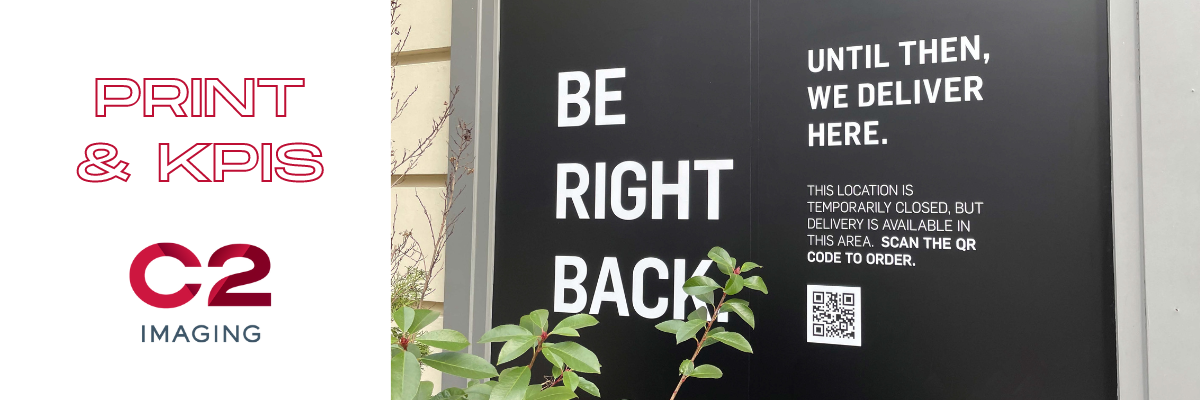
How To Track KPIs for Your Print Marketing Efforts
Tuesday , 21 November 2023 | Blog, collateral & commercial, tips, direct mail, marketing, Promotional, advertising
Print marketing has long been a tried-and-true tactic to drive business efforts, but is there a way to measure it? The short answer is yes! Though one of the oldest marketing methods, technology has made it easier to track the value of your print campaigns.
What are KPIs?
Key performance indicators, often abbreviated as KPIs, are measurable values that show how effectively a business is reaching its objectives. They are tracked for several reasons including:
- To be aware of how performance is changing and trending
- To compare performance against industry standards or internal goals
- To make more informed decisions in the future
While valuable in all industries, KPIs are crucial in marketing to show the value of your efforts.
Benefits of Tracking KPIs
There are many reasons why it is important to track the effectiveness of your print marketing campaigns using KPIs. Justifying marketing initiatives always starts with good measurement. KPI data is useful when comparing the performance of different campaigns. It is a great way to identify what's working and what isn't. You don't want to spend money on efforts that deliver low results.
KPIs for Print Marketing
Before choosing your KPIs, it is important to determine what goals you want to achieve. Perhaps you want to increase brand awareness, generate leads, or drive sales. Once you know your goals, you can choose the right KPIs to track. For example, you may want to measure how many people visit your website or make a purchase after receiving direct mail from your company.
Ways to Track KPIs in Print Marketing
In the past, sales tracking was one of the few ways to truly measure print marketing efforts. Now, technology has given us several more precise ways to help track KPIs.
QR Codes: If you've ever seen a square-shaped symbol on a flyer or brochure, it was likely a QR code. When scanned by a smartphone, it often leads to a digital landing page. Having a QR code in your print material allows you to track how many people viewed your website from your print materials, as well as the actions they take once they get there. It also makes learning more about your product or service much easier, as most people have their smartphones readily available.
Unique Links: Like QR codes, unique links can be tracked to determine who came to your website after seeing your print materials. If you opt to use a link, make sure it is simple enough for someone to easily type into a web browser.
Coupon Codes: By offering a discount, you can track how many customers redeem your coupon code upon sale. Using specific, unique coupon codes on each of your campaigns can reveal which effort is driving the most sales. Plus, over 70% of consumers enjoy receiving coupons and are more likely to make a purchase if offered a discount.
Surveys: When a customer buys from you or signs up to receive more information, consider asking them how they found out about your business. Create a short questionnaire that includes all your marketing methods. This will vary depending on the strategies you use to attract customers, such as print, social media, or word-of-mouth. Consider incentivizing the survey by giving the customer a discount or special offer after completing it.
Analyzing KPIs to Optimize Future Campaigns
Once you have enough data, you can start to review the effectiveness of your print marketing campaigns. Look for patterns and trends in your data. If you see a certain type of print marketing is performing well, it may be worth investing more in that type of campaign. The same goes for print marketing that didn't reach your KPI targets—it may be time to rethink your strategy.
Regardless of the KPIs you decide to measure, don't reduce the tracking to one instance. Evaluation should occur over time to ensure your print marketing materials resonate with your audience. Tools like Google Analytics, CRM software, or a simple spreadsheet can help with this. As time goes by, the needs of customers change, so it's important to adapt. Don't be afraid to tweak elements of your print marketing pieces, like the design, copy, and offer.
If you're looking to incorporate print into your marketing strategy, contact us today to learn how we can help!
Nov 21, 2023 |
Topics: Blog, collateral & commercial, tips, direct mail, marketing, Promotional, advertising
